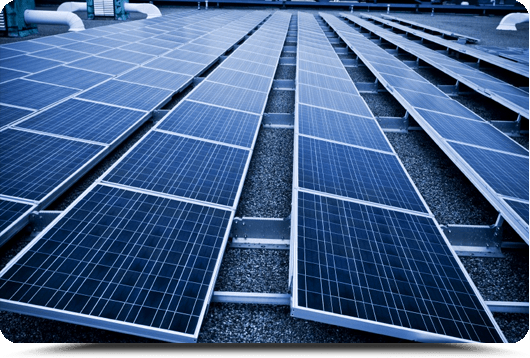Solar Tariff Wars Heat Up
 States that have helped boost rooftop solar installations through so-called net metering policies are beginning to scale back their subsidies under pressure from utilities. As ClimateWire reported today (here’s the link but it’s behind a paid subscription wall), Hawaii’s largest utility has just proposed rolling back the state’s net metering policy, joining Arizona, California, Minnesota, Colorado, Georgia and other states in debating whether the policies for roof-top installations are unfairly undermining the transmission system on which non-solar customers rely.
States that have helped boost rooftop solar installations through so-called net metering policies are beginning to scale back their subsidies under pressure from utilities. As ClimateWire reported today (here’s the link but it’s behind a paid subscription wall), Hawaii’s largest utility has just proposed rolling back the state’s net metering policy, joining Arizona, California, Minnesota, Colorado, Georgia and other states in debating whether the policies for roof-top installations are unfairly undermining the transmission system on which non-solar customers rely.
Here’s the background. 43 states and the District of Columbia allow some form of net metering. The idea here is that an individual customer can generate her own electricity and sell the excess back to the grid — the term net-metering comes from the fact that the customer pays only the net amount of electricity she uses from the grid after subtracting the energy generated and has a single meter installed to keep track of the generation and use. A customer can even wind up with a credit if she produces more than she needs. These polices, along with other subsidies, pricing innovations (principally third party solar leases), and dramatic declines in the price of solar panels, have led to huge increases in rooftop installations. Between 2012 and 2014, the number of residential rooftop installations more than doubled.
All good, right? The simple answer is all good to a point. As long as the number of rooftop installations is relatively low (and it is for all states except Hawaii, where 12 percent of all residential customers have solar panels on their roofs) these policies don’t make much of a difference to traditional utility companies that provide the distribution wires that connect customers to the grid and supply electricity to most customers as well. But the worry is that if a high enough number of customers “defects” from the grid by generating their own electricity, the remaining customers — likely to include renters and low income homeowners who can’t afford solar installations, among others — will be left paying higher electricity prices that include the costs of maintaining the distribution grid. Solar rooftop owners, by contrast, get a free subsidy by failing to pay for their share. If the subsidies are sufficiently out of whack, utilities could find themselves in a “death spiral,” where more and more customers defect as the costs of solar go down and the costs of remaining a traditional customer increase. Some European utilities already appear to be facing such a scenario.
States are responding in different ways. Some, like Hawaii and Arizona, have received proposals from individual utilities in rate-making proceedings to alter net metering policies. Arizona responded by allowing utilities to charge solar customers a fee per kilowatt of installed solar. Others, like California and Minnesota, have legislation to address the question. Minnesota is allowing utilities to apply to their Public Utility Commissions for a special “value of solar” tariff. California’s bill directs its PUC to address the state’s net metering tariff to ensure that it fully accounts for both the costs and benefits of rooftop solar and other distributed generation. We’re likely to see still other innovative responses to the problem as solar and other renewable generation continues to increase.
Though the roll back of generous net metering polices may seem like a setback to the growth of renewable energy, another way to view it is this: Public Utility Commissions, utilities, solar and wind companies, utility customers and state legislatures are engaged in precisely the kind of experimentation we should hope for from state “laboratories of democracy.” They’re learning as they go, borrowing from the experience of others –including trend-setting countries in Europe — to avoid unintended consequences. The hope is that environmental advocates, consumers and proponents of a dramatic transition to a cleaner, greener, grid have a strong enough voice at the table to get the balance in favor of this transition right.
Reader Comments
One Reply to “Solar Tariff Wars Heat Up”
Comments are closed.






Solar customers also depend on the transmission they aren’t paying for.